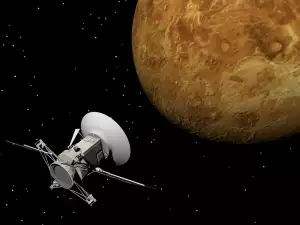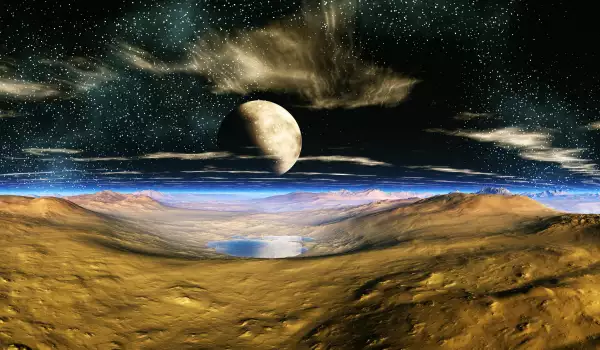The dwarf planet Ceres, located in the asteroid belt between Mars and Jupiter, continues to puzzle scientists with the photos of strange lines on its surface being sent by the Dawn space probe.
The probe was launched back in 2007 by NASA to study the dwarf planet.
NASA's grandiose project costs $466 million and is part of scientists' efforts to unravel the evolution of the Solar System.
With its approach of the dwarf planet, the space probe managed to take several photos that have already sparked a frenzy. In the photos taken earlier this year, we can see several large, bright and unexplained spots in an enormous rocky crater.

Ufologists right away declared it a surefire sign of the presence of extraterrestrial civilizations but scientists were a bit more conservative in their reactions. According to astronomers and physicists, the bright spots are most likely chunks of ice or salts that are reflecting sunlight.
Scientists calculate that the surface of Ceres is covered by a thick layer of ice, so a similar claim is not devoid of logic.
According to experts the dwarf planet has a 25% water content and it is possible for carbon compounds and even some kind of forms of life to exist under the ice.
The new photographs from Ceres have brought new life to speculations regarding the presence of intelligent life there. The images that the probe sent back days ago show bright spots, as well as a nearly 3-mile high pyramidal structure.

But regardless of whether it has any signs of an extraterrestrial civilization or not, Ceres draws particular interest from scientists for another reason - the colonization of space.
Ever since the space probe began its voyage toward the dwarf planet, scientists have been working on different plans for colonizing it. It is located between Mars and Jupiter and has a gravitational acceleration about 2.8% that of Earth.
The diameter of Ceres is about 600 miles (1000 km), with a land area about the size of Argentina. Plus, it's quite cold. Temperatures on it range from -160°F (-106°C) to -30°F (-33°C).
And despite the seemingly unfavorable conditions for life on it at 1st glance, scientists are positive that it possesses a huge potential for colonization.
Based on their calculations, if the material on Ceres were to be used to build a colony, the area of the newly formed colony would surpass the area of the Earth by over 150 times.












